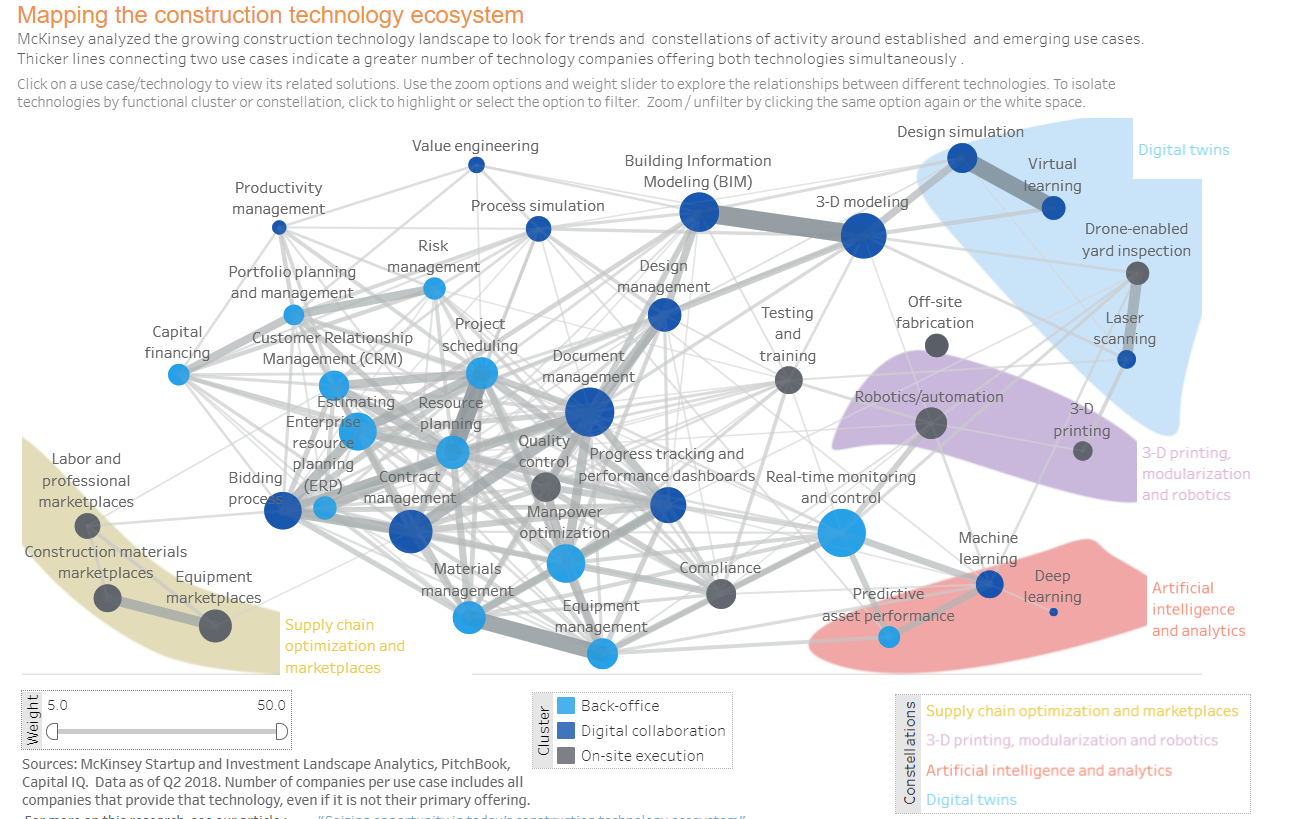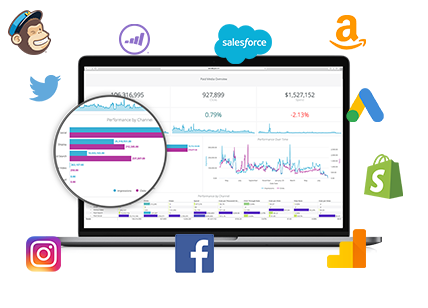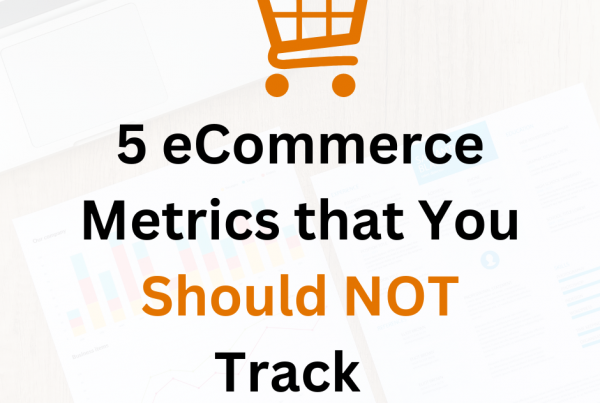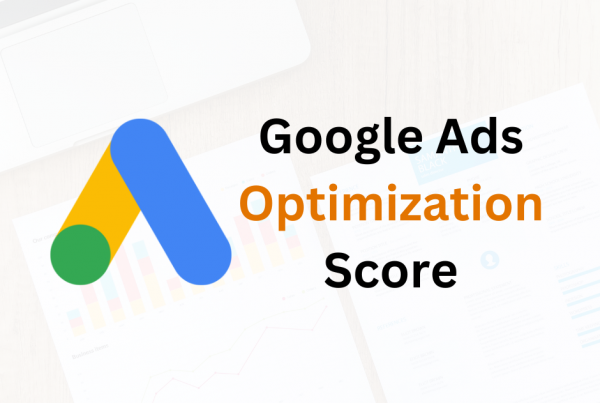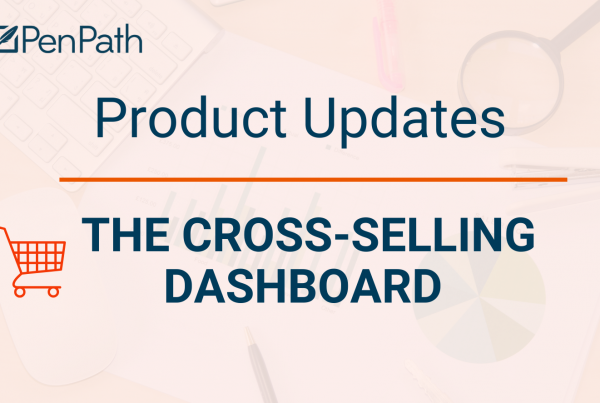Welcome to the Data Visualization Championships!
Let’s take a look at some of the most commonly used ones in marketing. Data Visualization tools are used to see data in a meaningful way that makes it easier for robust decision-making. We’ll discuss their pros and cons, and judge them from a data visualization and analysis standpoint.
It’s also important to note the ideal company size that would benefit from these tools and to whom they are similar to. In the final round, they’ll be compared to Tableau’s capabilities and how they measure up. The sample of tools up for review are CRMs and Microsoft Excel.
Tools Up For Review
- CRM
- Microsoft Excel
- Tableau
1. CRM
Ideal Size: Medium to Large Companies
Similar To: CRMs, or Customer Relationship Management software, is similar to a variety of other marketing tools that only focus on one specific type of data. They can be compared to Google Analytics and Google Adwords. While CRMs focus on sales data, the others focus on web and paid search data, respectively.
A CRM is the most complex marketing software an organization typically has. It’s a software used for storing all customer information, and it’s ideal for medium to larger companies that need a secure database.
Pros: In digital marketing, it’s important to track online data, and a CRM is the most commonly used software on the sales floor. The best part about having visualizations in the CRM is that you can get an intimate look at your sales funnel and sales data all in the same place.
Cons: Most CRMs can be clunky and rigid. Since many people use it daily, there are permissions needed for updating information which can lead to a large amount of bureaucracy. There is an option for calculations in Salesforce but again, it can only apply to sales data. There’s also no option to blend Salesforce easily with other types of data to get deeper insights. It is possible, but it’s considered an additional rather than a standard feature.
Visualization and Analytics Abilities: Let’s turn our attention to the dashboard shot below of one of the most popular CRMs: Salesforce.
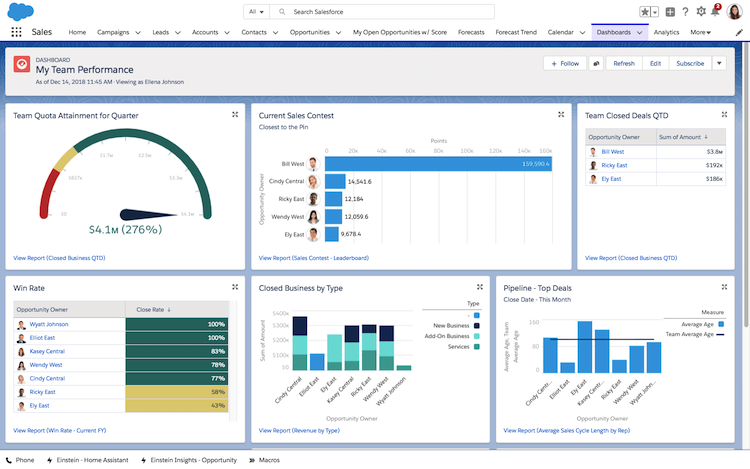 Source: help.salesforce.com
Source: help.salesforce.com
According to Salesforce, users have the ability to build drag-and-drop reports and dashboards. There are also different experiences if you use Salesforce Classic vs. Salesforce Lightning. So you get more capabilities if you pay more. There are ways to use buckets and different types of filters and only sales data is reported. It’s an efficient way to analyze sales data for the average salesperson who needs quick and handy analysis.
The number of charts and graphs are limited but by using Javascript libraries and other integrations, there are ways to diversify the types of visualizations. It would take a web developer to come in and understand the data and business to do it—ultimately doable but not very efficient.
Here’s what it would look like:
 Source: Bits And Pieces Medium Blog
Source: Bits And Pieces Medium Blog
2. Microsoft Excel
Ideal Size: Small to Medium Companies. Larger ones rely on SAP and other BI tools more although they might use Excel once in a while.
Similar To: Google Sheets
Excel is one of the most used tools at any company. It’s probably the first step most marketers take in the steps of data analysis and data visualization.
Pros: One of the biggest pros is that it’s easy to learn. Most students use Excel in high school and college, so they already have experience with it. It’s the best for detailed data analysis because of individual data cell manipulation. There’s also the ability to do small scale statistical analysis.
Cons: Excel is the best for small to medium businesses. As organizations become larger and handle more data, most of the reports do stay in Excel. This is frustrating for the employee whose time is eaten up by making reports. There’s also lag time as more data is added. Another factor that can be an obstacle to fast data analysis is the manual entry aspect. Because of manual entry, spreadsheets can be error-prone.
The biggest disadvantages are that the data and data viz are in one place, making the program slow and clunky. It’s not an elegant, sophisticated or beautiful solution. It’s also not for an eagles’ point-of-view compared to Salesforce and other software, which provide data going back for years.
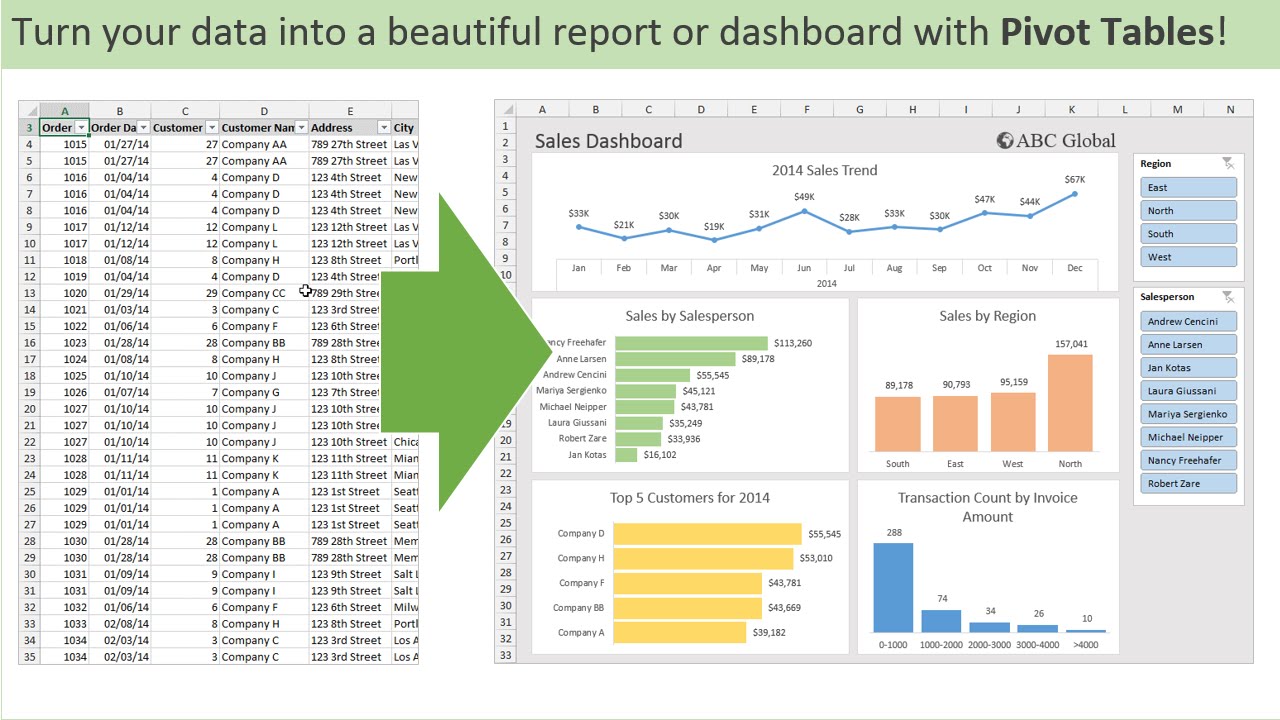 Source: Youtube
Source: Youtube
Visualization and Analytics Capabilities:
Pivot Tables and Macros are the most advanced part of Excel—along with the numerous formulas of course. Excel is a quick and easy way to analyze data on the spot. For some companies, it is a boon that the data and data visualization are in the same place. Ultimately, this is a great tool that should be used for small scale data exploration, but it is often used for large data visualization. It was never intended for that, so that creates problems.
3. Tableau
Ideal Company Size: Medium to Larger Companies
Similar To: Google Data Studio (although more functionalities)
Tableau is a favorite of business intelligence and C-Suite leaders, and for good reason. Let’s see what Tableau is known for.
Pros: Graphs in Tableau are tailored to the company and customizable at every point—not drag and drop like other software. The magic comes from the fact that the data is kept separate from the visualization. This means there’s less lag time and the data that comes in (from a data warehouse) might already be cleaned. There’s also the ability to do joins without knowing SQL (a programming language). It’s a favorite of C-Suite leaders because it gives a big picture of every source the company has, all together. This is invaluable for seeing how different tools interact and which provide the best result to the bottom line.
Cons: Tableau is not a siloed data source, which means it’s not meant for a specific type of data (like Google Analytics, for example). It’s very fluid, which could be a pro and a con. It’s not a software used for point-of-time analysis but more for long-term success. This is why it’s not something every employee needs to use. It’s a tool used for an overall data strategy.
Visualization and Analytics Capabilities:
This is what Tableau is known for. Providing elegant, beautiful and sophisticated analysis, Tableau makes data visualization appealing. There’s hover and annotate capabilities to illustrate different graph parts. Because it’s customizable, any type of graph is imaginable. Hosting visualizations on a server makes them easy to share. Tableau visualizations are used as part of data journalism to explore different industry insights by the world’s most prestigious companies.
Here is an example.
Source: mckinsey.com
Tableau can be difficult to use, but only because there’s so many options of what’s possible. It’s very custom and almost any type of visualization can be built. A good analogy is to compare Tableau to Photoshop and other tools as equal or above Microsoft Paint. This is what makes it extremely powerful.
Who’s The Winner?
Let’s get down to it—who’s the heavyweight winner of this competition? From the different pros and cons for each, this isn’t an easy question, because they serve organizations in different ways.
Ultimately, all of them are useful in one way or another to the marketing department. The only reason Tableau has an edge over the others is because it is the umbrella that connects the different sources and it’s on the cutting edge of what’s possible with data analysis and visualization.
For companies that are past a certain stage though, Tableau is the clear winner. There’s no match when it comes to creating advanced visualizations. Having the capacity to make refined calculations and create new metrics is also what takes Tableau over the edge in terms of competition.
Tableau is not a tool to be used for its own sake—data visualization should be the end point of a good data strategy. This doesn’t include data blending, warehousing, etc. Combining all these points leads to advanced analysis and better decision making in the long run for executives.
Schedule a demo with us if you’re a data-driven marketer who is looking for more in terms of data analysis capabilities.
We’re a marketing intelligence agency who is equal parts creative and analytical. We’ve worked with marketing data before and we know how to take it to the next level with advanced analysis and visualization. Let’s get your data strategy up to par.

